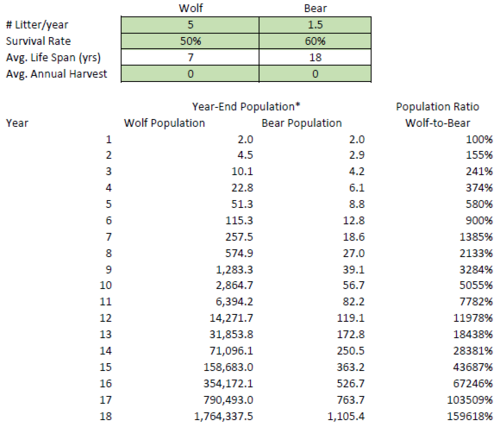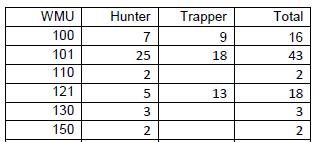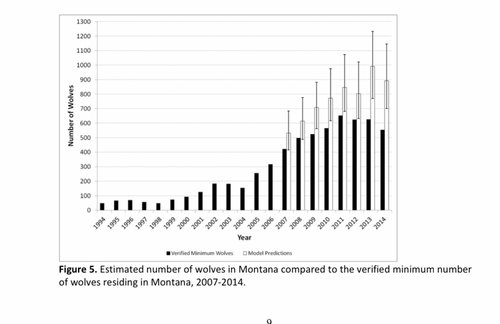Since both black bear and wolves are a dominant factor in NW MT, figured a breakdown of #'s would be an interesting comparison.
Harvest, cub / pup litter size, mortality, and avg lifespan:
Wolves/black bear harvest 2017:
Wolves - 84
B bears - 507
Wolves/black bear avg annual litter:
Wolves - 5
B bears - 1.5
Wolves/black bear cub/pup avg mortality:
Wolves - 50%
B bears - 40%
Wolves/black bear life span:
Wolves - 7 years
B bears - 18 years
As IDFG stated recently,
Montana needs to get with practical wolf #'s so we may better assist our R1 ungulate conservation efforts related to apex predation.
Harvest, cub / pup litter size, mortality, and avg lifespan:
Wolves/black bear harvest 2017:
Wolves - 84
B bears - 507
Wolves/black bear avg annual litter:
Wolves - 5
B bears - 1.5
Wolves/black bear cub/pup avg mortality:
Wolves - 50%
B bears - 40%
Wolves/black bear life span:
Wolves - 7 years
B bears - 18 years
As IDFG stated recently,
We won't speculate any longer on whether the population is increasing or decreasing," Schriever said. "That makes the wolf management plan actually useful for us now that we know which direction the population will be moving.
Montana needs to get with practical wolf #'s so we may better assist our R1 ungulate conservation efforts related to apex predation.







